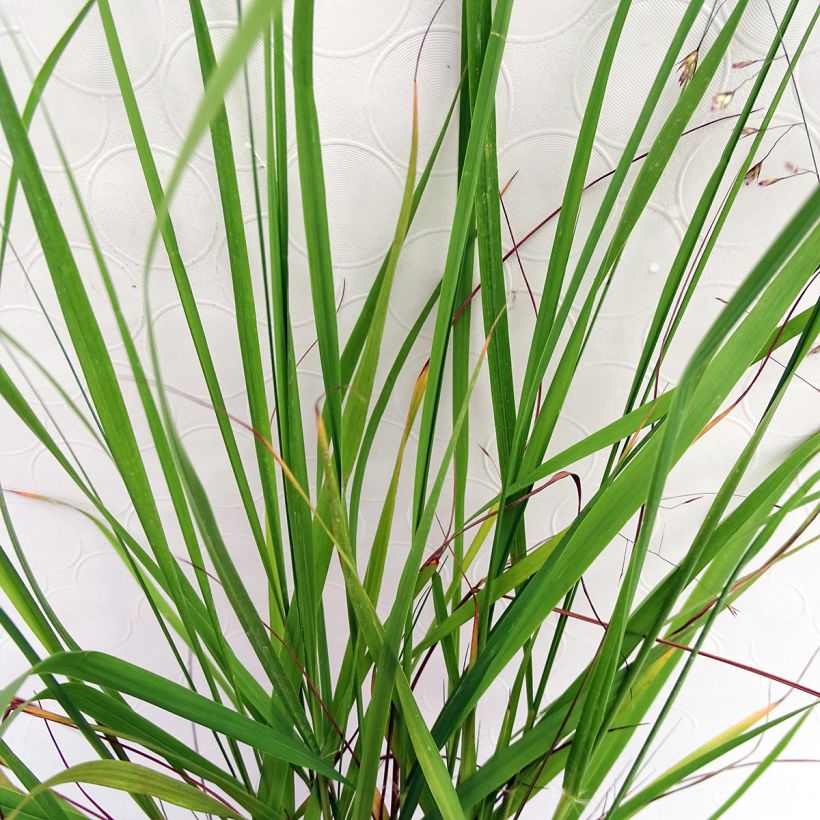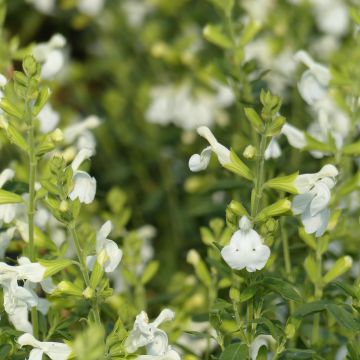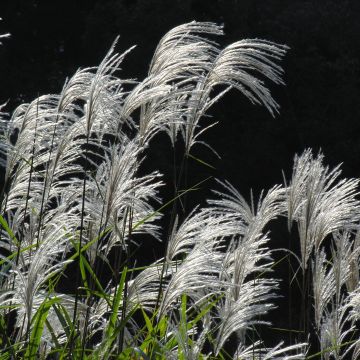

Eragrostis trichodes
Eragrostis trichodes
Eragrostis trichodes
Sand Love Grass
This item cannot be shipped to the selected country
Delivery charge from €5.90
Delivery charge from €5.90
More information
Schedule delivery date,
and select date in basket
This plant carries a 12 months recovery warranty
More information
We guarantee the quality of our plants for a full growing cycle, and will replace at our expense any plant that fails to recover under normal climatic and planting conditions.
From €5.90 for pickup delivery and €6.90 for home delivery
Express home delivery from €8.90.
From €5.90 for pickup delivery and €6.90 for home delivery
Express home delivery from €8.90.
Does this plant fit my garden?
Set up your Plantfit profile →
Description
Eragrostis trichodes is a grass that truly enchants borders in late summer. Its very fine vegetation shows a slightly collapsed fountain habit under the weight of its incredible amethyst pink flowering. Dark green in spring and summer, the clump it forms almost disappears under a vaporous and shiny cloud before taking on a more golden bronze hue in autumn. It is a hardy and easily cultivated plant that remains decorative for a long time in winter and is particularly well-suited to dry and poor soils. This tall grass is suitable for all styles of gardens, whether they are romantic, natural or contemporary. Just place it in the sun, in well-drained soil, and admire the small miracle of its flowers every summer.
Eragrostis trichodes is a perennial plant of the Poaceae family, native to North America. This emblematic plant of the Great Plains is most commonly found growing on sandy, rocky or roadside soils. The plant initially forms an upright clump, reaching a height and width of 90 cm (35in) to 1 m (3ft). Then it gently spreads out until it collapses on the ground during flowering. Its leaves are dark green, deciduous. They fade into beautiful golden tones but persist for a long time in winter, making the plant decorative for a good part of the year. From the centre of the clump, an abundance of open, branched inflorescences emerge in July-August, bearing countless tiny spikelets in a lovely pink-purple shade. These flowers almost double the volume of the collapsed plant, easily reaching a height of 90 cm (35in) again. The mature spikes, in October, take on a more brownish hue, the colour of the seeds that will be dispersed by the wind throughout the garden.
Eragrostis trichodes is a truly undemanding grass with its incredible diffuse spikes and autumn-coloured foliage. It is both highly decorative and full of dynamism in late summer, requiring almost no maintenance. It can be used to adorn the gaps between stones in a large rock garden, as well as in bordering paths or raised beds, or even to stabilize the soil on a slope or embankment. Take advantage of its late flowering to display it near a pathway, paired with the blooms of tall sedums (Sedum Matrona, Sedum Jose Obergine), the stars of asters (Aster laevis Calliope, Aster turbinellus, Aster cordifolius), or the bright magenta flowers of shrubby salvias. It pairs well with Caryopteris and Stipa arundinacea, autumn daisies, Japanese anemones, and perennial chrysanthemums. Its inflorescences are very beautiful in dried or fresh bouquets.
Report an error about the product description
Eragrostis trichodes in pictures




Flowering
Foliage
Plant habit
Botanical data
Eragrostis
trichodes
Poaceae
Sand Love Grass
North America
Other Eragrostis
Planting and care
Eragrostis trichodes thrives in warm and sunny positions and well-drained, sandy or even stony soils, whether slightly acidic, neutral or calcareous. Not very demanding on the nature of the soil, it adapts quite well to poor soils and degraded soils, but will be more spectacular in fertile soil. Prune the flowering spikes after flowering to prevent spontaneous sowing.
Planting period
Intended location
Care
This item has not been reviewed yet - be the first to leave a review about it.
Late flowering perennials
Haven't found what you were looking for?
Hardiness is the lowest winter temperature a plant can endure without suffering serious damage or even dying. However, hardiness is affected by location (a sheltered area, such as a patio), protection (winter cover) and soil type (hardiness is improved by well-drained soil).

Photo Sharing Terms & Conditions
In order to encourage gardeners to interact and share their experiences, Promesse de fleurs offers various media enabling content to be uploaded onto its Site - in particular via the ‘Photo sharing’ module.
The User agrees to refrain from:
- Posting any content that is illegal, prejudicial, insulting, racist, inciteful to hatred, revisionist, contrary to public decency, that infringes on privacy or on the privacy rights of third parties, in particular the publicity rights of persons and goods, intellectual property rights, or the right to privacy.
- Submitting content on behalf of a third party;
- Impersonate the identity of a third party and/or publish any personal information about a third party;
In general, the User undertakes to refrain from any unethical behaviour.
All Content (in particular text, comments, files, images, photos, videos, creative works, etc.), which may be subject to property or intellectual property rights, image or other private rights, shall remain the property of the User, subject to the limited rights granted by the terms of the licence granted by Promesse de fleurs as stated below. Users are at liberty to publish or not to publish such Content on the Site, notably via the ‘Photo Sharing’ facility, and accept that this Content shall be made public and freely accessible, notably on the Internet.
Users further acknowledge, undertake to have ,and guarantee that they hold all necessary rights and permissions to publish such material on the Site, in particular with regard to the legislation in force pertaining to any privacy, property, intellectual property, image, or contractual rights, or rights of any other nature. By publishing such Content on the Site, Users acknowledge accepting full liability as publishers of the Content within the meaning of the law, and grant Promesse de fleurs, free of charge, an inclusive, worldwide licence for the said Content for the entire duration of its publication, including all reproduction, representation, up/downloading, displaying, performing, transmission, and storage rights.
Users also grant permission for their name to be linked to the Content and accept that this link may not always be made available.
By engaging in posting material, Users consent to their Content becoming automatically accessible on the Internet, in particular on other sites and/or blogs and/or web pages of the Promesse de fleurs site, including in particular social pages and the Promesse de fleurs catalogue.
Users may secure the removal of entrusted content free of charge by issuing a simple request via our contact form.
The flowering period indicated on our website applies to countries and regions located in USDA zone 8 (France, the United Kingdom, Ireland, the Netherlands, etc.)
It will vary according to where you live:
- In zones 9 to 10 (Italy, Spain, Greece, etc.), flowering will occur about 2 to 4 weeks earlier.
- In zones 6 to 7 (Germany, Poland, Slovenia, and lower mountainous regions), flowering will be delayed by 2 to 3 weeks.
- In zone 5 (Central Europe, Scandinavia), blooming will be delayed by 3 to 5 weeks.
In temperate climates, pruning of spring-flowering shrubs (forsythia, spireas, etc.) should be done just after flowering.
Pruning of summer-flowering shrubs (Indian Lilac, Perovskia, etc.) can be done in winter or spring.
In cold regions as well as with frost-sensitive plants, avoid pruning too early when severe frosts may still occur.
The planting period indicated on our website applies to countries and regions located in USDA zone 8 (France, United Kingdom, Ireland, Netherlands).
It will vary according to where you live:
- In Mediterranean zones (Marseille, Madrid, Milan, etc.), autumn and winter are the best planting periods.
- In continental zones (Strasbourg, Munich, Vienna, etc.), delay planting by 2 to 3 weeks in spring and bring it forward by 2 to 4 weeks in autumn.
- In mountainous regions (the Alps, Pyrenees, Carpathians, etc.), it is best to plant in late spring (May-June) or late summer (August-September).
The harvesting period indicated on our website applies to countries and regions in USDA zone 8 (France, England, Ireland, the Netherlands).
In colder areas (Scandinavia, Poland, Austria...) fruit and vegetable harvests are likely to be delayed by 3-4 weeks.
In warmer areas (Italy, Spain, Greece, etc.), harvesting will probably take place earlier, depending on weather conditions.
The sowing periods indicated on our website apply to countries and regions within USDA Zone 8 (France, UK, Ireland, Netherlands).
In colder areas (Scandinavia, Poland, Austria...), delay any outdoor sowing by 3-4 weeks, or sow under glass.
In warmer climes (Italy, Spain, Greece, etc.), bring outdoor sowing forward by a few weeks.
















































